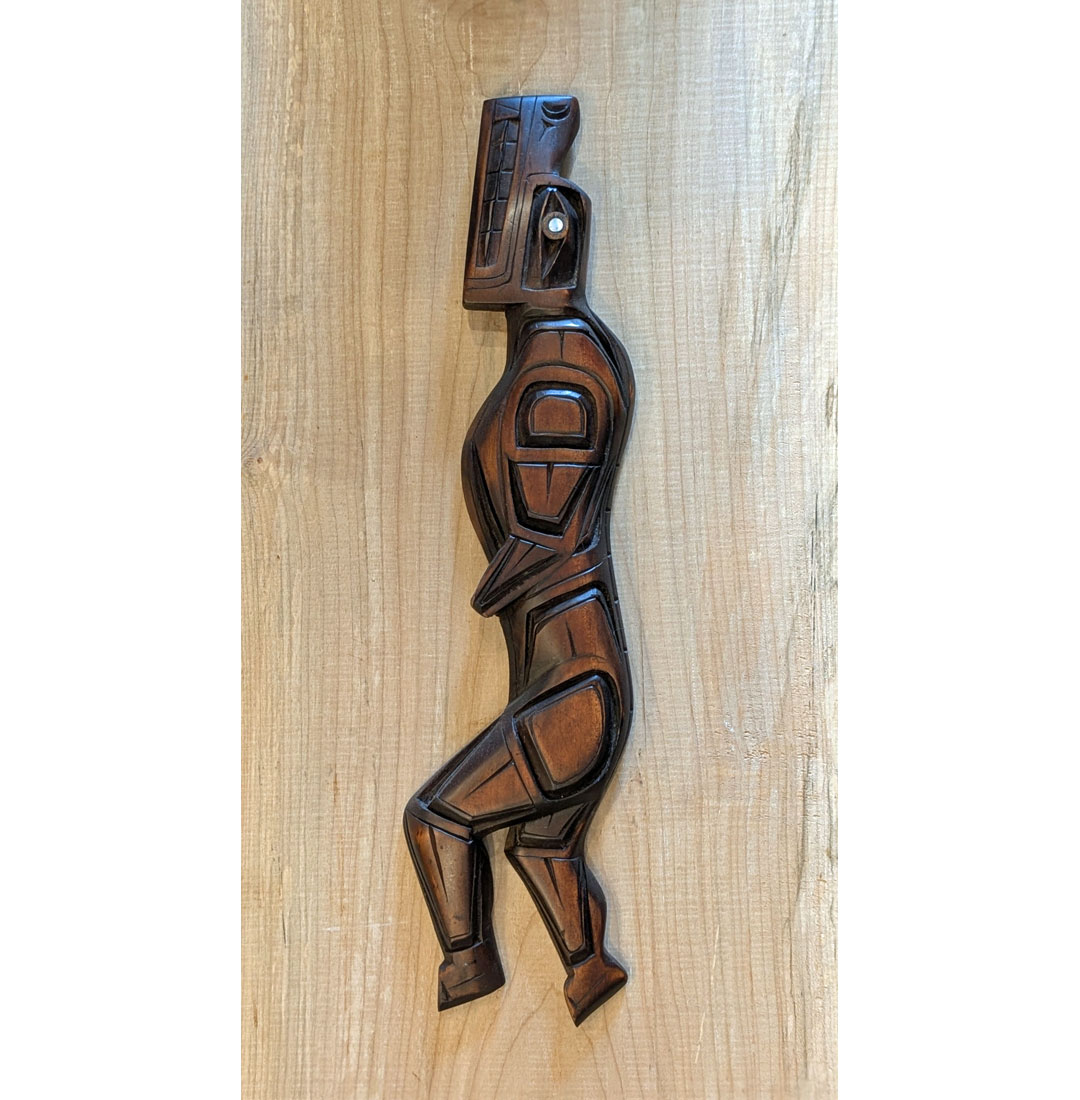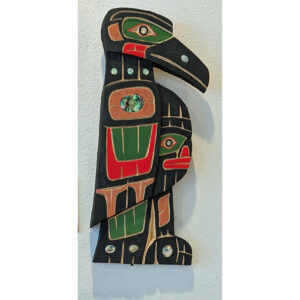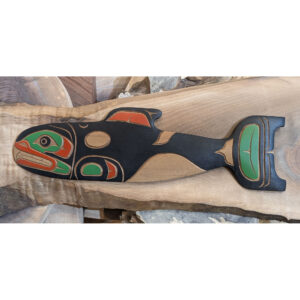First Nations Wolf Dancer Wall Panel 17.5 x 3.5 x .5
$345.00
An ecstatic dancing Wolf/Human figure is depicted in this unusual Coast Salish First Nation carving. Initialed but not signed. The title and the Coast Salish affiliation was noted by the artist on the back, however. Measures 17.5 x 3.5 x .5, priced at $345. The wood was burnished and hand-rubbed and an eye inlay of Mother-of-Pearl adds interest.
The Coast Salish First Nations are a diverse group of Indigenous peoples inhabiting the Salish Sea region, including western Washington State and southwestern British Columbia. They have a deep history and cultural connection to the land, emphasizing environmental stewardship and cultural preservation. Each Salish nation maintains its own unique identity, government, and traditions.
The Coast Salish territories encompass lands surrounding the Salish Sea (Puget Sound, Strait of Juan de Fuca, etc.), including the Pacific coast of Washington and northern Oregon.
The Coast Salish are a language family with over 20 related languages and dialects, says the American Museum of Natural History. Each tribal group has its own name and unique cultural practices. The Coast Salish relied heavily on the resources of their coastal environment, particularly salmon and other fish. They also hunted, gathered, and harvested a variety of plant and animal life. The potlatch, a ceremonial gift-giving event, was a crucial part of Coast Salish culture, enhancing social status and reinforcing kinship ties.
Today, many Coast Salish nations are actively pursuing treaties and land claims with federal and provincial governments, and are working towards self-government. Some Coast Salish nations have banded together to achieve their shared goals, such as the Hul’qumi’num Treaty Group, (founded in 1993), which includes six First Nations: Cowichan, Chemainus, Penelakut, Lyackson, Halalt and Lake Cowichan.
The first smallpox epidemic to hit the region was in the 1680s, with the disease travelling overland from Mexico by intertribal transmission. Among losses due to diseases, and a series of earlier epidemics that had wiped out many peoples entirely, e.g. the Snokomish in 1850, a smallpox epidemic broke out among the Northwest tribes in 1862, killing roughly half the affected native populations, in some cases up to 90% or more. The smallpox epidemic of 1862 started when an infected miner from San Francisco stopped in Victoria on his way to the Cariboo Gold Rush.
As the epidemic spread, police, supported by gunboats, forced thousands of First Nations people living in encampments around Victoria to leave and many returned to their home villages which spread the epidemic. Some consider the decision to force First Nations people to leave their encampments an intentional act of genocide. Mean population decline 1774–1874 was about 66%. Though the Salish peoples together are less numerous than the Cherokee or Navajo, the numbers shown below represent a small fraction of the group.





